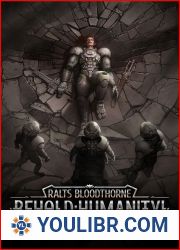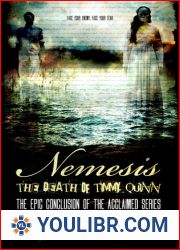
BOOKS - Inscribing Death: Burials, Representations, and Remembrance in Tang China

Inscribing Death: Burials, Representations, and Remembrance in Tang China
Author: Professor Jessey J. C. Choo
Year: July 31, 2022
Format: PDF
File size: PDF 3.6 MB
Language: English

Year: July 31, 2022
Format: PDF
File size: PDF 3.6 MB
Language: English

The book "Inscribing Death: Burials, Representations, and Remembrance in Tang China" offers a nuanced examination of how Chinese society perceived and dealt with death during the medieval period (200-1000 AD) and the Tang dynasty (618-907 AD). The author delves into the various ways in which people used burial practices, mourning rituals, and commemorative activities to shape their identities and memories, both individually and collectively. This study highlights the significance of remembrance as an expression of filial piety and the grave as a focal point of ancestral sacrifice, providing new insights into the evolution of ancestral worship and its impact on personal relationships. During this period, Chinese society became increasingly multicultural and multireligious, leading to the selective adoption and interpretation of different acts of remembrance. The book explores how individuals independently constructed the socioreligious meanings of death and the handling of corpses through engagement with and review of these acts. Drawing on numerous sources, including hundreds of newly excavated entombed epitaph inscriptions, Inscribing Death sheds light on the process by which the living and the dead negotiated the multiplicity of meanings surrounding death and how these meanings shaped their memories and identities. The book focuses on the growing emphasis on remembrance as an expression of filial piety and the grave as a focal point of ancestral sacrifice, revealing the changing modus operandi of ancestral worship and its continuous shaping influence on intimate human relationships.
Книга «Вписывая смерть: захоронения, представления и воспоминание в танском Китае» предлагает тонкое исследование того, как китайское общество воспринимало смерть и имело дело со смертью в средневековый период (200-1000 гг. н.э.) и династия Тан (618-907 гг. н.э.). Автор углубляется в различные способы, которыми люди использовали погребальные практики, траурные ритуалы и памятные мероприятия для формирования своей идентичности и воспоминаний, как индивидуально, так и коллективно. Это исследование подчеркивает важность памяти как выражения сыновней набожности и могилы как координационного центра жертвоприношения предков, предоставляя новое понимание эволюции культа предков и его влияния на личные отношения. В этот период китайское общество становилось все более многокультурным и многорелигиозным, что привело к избирательному принятию и интерпретации различных актов памяти. Книга исследует, как люди независимо друг от друга конструировали социорелигиозные значения смерти и обращения с трупами посредством вовлечения и обзора этих действий. Опираясь на многочисленные источники, в том числе сотни недавно раскопанных надписей-эпитафий, «Надпись о смерти» проливает свет на процесс, с помощью которого живые и мертвые договаривались о множественности значений, связанных со смертью, и о том, как эти значения формировали их воспоминания и личности. Книга фокусируется на растущем акценте на воспоминании как выражении сыновней благочестия и могиле как фокусе жертвоприношения предков, раскрывая изменяющийся modus operandi культа предков и его непрерывное формирующее влияние на интимные человеческие отношения.
livre « Inscrire la mort : sépultures, représentations et souvenirs dans la Chine Tang » propose une étude subtile de la façon dont la société chinoise a perçu la mort et a traité la mort pendant la période médiévale (200-1000 av. J.-C.) et la dynastie Tang (618-907 av. J.-C.). L'auteur explore les différentes façons dont les gens ont utilisé les pratiques funéraires, les rituels de deuil et les commémorations pour façonner leur identité et leurs souvenirs, individuellement et collectivement. Cette étude souligne l'importance de la mémoire comme expression des fils de la piété et de la tombe comme point focal du sacrifice ancestral, fournissant une nouvelle compréhension de l'évolution du culte ancestral et de son impact sur les relations personnelles. Au cours de cette période, la société chinoise est devenue de plus en plus multiculturelle et multireligieuse, ce qui a conduit à l'adoption sélective et à l'interprétation de divers actes de mémoire. livre explore comment les gens, indépendamment les uns des autres, ont construit les significations socioreligieuses de la mort et du traitement des cadavres par la participation et l'examen de ces actions. S'appuyant sur de nombreuses sources, y compris des centaines d'épitaphes récemment découvertes, « L'inscription de la mort » éclaire le processus par lequel les vivants et les morts ont convenu de la pluralité des significations liées à la mort et de la façon dont ces significations ont façonné leurs souvenirs et leur personnalité. livre se concentre sur l'accent croissant sur le souvenir comme l'expression des fils de la piété et de la tombe comme la concentration du sacrifice ancestral, révélant le mode changeant du culte ancestral et son influence continue sur les relations humaines intimes.
libro «Inscribiendo la muerte: entierros, representaciones y recuerdos en la China de Tang» ofrece un sutil estudio de cómo la sociedad china percibió la muerte y trató con la muerte durante el período medieval (200-1000 d. C.) y la dinastía Tang (618-907 d. C.). autor profundiza en las diferentes formas en las que las personas han utilizado prácticas funerarias, rituales fúnebres y actos conmemorativos para formar su identidad y recuerdos, tanto individual como colectivamente. Este estudio destaca la importancia de la memoria como expresión de la devoción y sepultura de los hijos como punto focal del sacrificio ancestral, aportando una nueva comprensión de la evolución del culto ancestral y su influencia en las relaciones personales. Durante este período, la sociedad china se hizo cada vez más multicultural y multirreligiosa, lo que llevó a la aceptación e interpretación selectiva de diversos actos de memoria. libro explora cómo las personas, de forma independiente, construyeron los significados sociorreligiosos de la muerte y el tratamiento de los cadáveres a través de la participación y revisión de estas acciones. Basándose en numerosas fuentes, entre ellas cientos de inscripciones-epitafio recientemente excavadas, la «Inscripción de la Muerte» arroja luz sobre el proceso por el cual los vivos y los muertos negociaron la multiplicidad de significados relacionados con la muerte y cómo estos significados moldearon sus recuerdos y personalidades. libro se centra en el creciente énfasis en el recuerdo como expresión de los hijos de la piedad y la tumba como foco del sacrificio ancestral, revelando el modus operandi cambiante del culto ancestral y su continua influencia formativa en las relaciones humanas íntimas.
Il libro «Inserendo la morte: sepolcri, spettacoli e ricordi nella Cina di danza» offre un delicato studio su come la società cinese ha percepito la morte e ha avuto a che fare con la morte nel periodo medievale (200-1000) e la dinastia Tang (618-907). L'autore approfondisce i vari modi in cui la gente ha utilizzato le pratiche funebri, rituali di lutto e commemorazioni per formare la propria identità e i propri ricordi, sia individualmente che collettivamente. Questo studio sottolinea l'importanza della memoria come espressione della devozione dei figli e della tomba come centro di coordinamento del sacrificio degli antenati, fornendo una nuova comprensione dell'evoluzione del culto ancestrale e del suo impatto sulle relazioni personali. In questo periodo, la società cinese è diventata sempre più multiculturale e multireligiosa, portando all'accettazione selettiva e all'interpretazione di diversi atti di memoria. Il libro indaga come le persone, indipendentemente l'una dall'altra, hanno progettato i valori sociorealistici della morte e del trattamento dei cadaveri attraverso l'inclusione e la revisione di queste azioni. Basandosi su numerose fonti, tra cui centinaia di scritte epitafie appena scavate, «La scritta della morte» mette in luce il processo attraverso il quale i vivi e i morti hanno concordato la molteplicità dei significati legati alla morte e il modo in cui questi significati hanno formato i loro ricordi e le loro personalità. Il libro si concentra sull'accento crescente del ricordo come espressione della pietà dei figli e della tomba come punto focale del sacrificio degli antenati, rivelando il mutato modus operandi culto ancestrale e la sua continua influenza formativa sui rapporti umani intimi.
Das Buch „Schreiben des Todes: Bestattungen, Darstellungen und Erinnerungen im Tang-China“ bietet eine subtile Untersuchung darüber, wie die chinesische Gesellschaft den Tod wahrnahm und sich mit dem Tod im Mittelalter (200-1000 n. Chr.) und der Tang-Dynastie (618-907 n. Chr.) befasste. Der Autor geht auf die verschiedenen Arten ein, in denen Menschen Bestattungsübungen, Trauerrituale und Gedenkveranstaltungen nutzten, um ihre Identität und Erinnerungen individuell und kollektiv zu formen. Diese Studie unterstreicht die Bedeutung der Erinnerung als Ausdruck der kindlichen Frömmigkeit und des Grabes als Brennpunkt des Ahnenopfers und liefert neue Einblicke in die Entwicklung des Ahnenkults und seine Auswirkungen auf persönliche Beziehungen. Während dieser Zeit wurde die chinesische Gesellschaft zunehmend multikulturell und multireligiös, was zur selektiven Akzeptanz und Interpretation verschiedener Akte der Erinnerung führte. Das Buch untersucht, wie Menschen unabhängig voneinander sozioreligiöse Bedeutungen des Todes und des Umgangs mit ichen durch Einbeziehung und Überprüfung dieser Handlungen konstruierten. Aufbauend auf zahlreichen Quellen, darunter Hunderte von kürzlich ausgegrabenen Epitaph-Inschriften, beleuchtet die Death Inschrift den Prozess, durch den die benden und die Toten die Vielfalt der mit dem Tod verbundenen Bedeutungen aushandelten und wie diese Bedeutungen ihre Erinnerungen und Persönlichkeiten prägten. Das Buch konzentriert sich auf die wachsende Betonung der Erinnerung als Ausdruck der kindlichen Frömmigkeit und des Grabes als Schwerpunkt des Ahnenopfers und enthüllt den sich verändernden Modus Operandi des Ahnenkults und seine kontinuierliche prägende Wirkung auf intime menschliche Beziehungen.
''
"Inscribing Death: Burials, Representations, and Remembrance in Tang China" kitabı, Çin toplumunun ortaçağ döneminde (MS 200-1000) ve Tang hanedanı döneminde (MS 618-907) ölümü nasıl algıladığına ve ölümle nasıl başa çıktığına dair ayrıntılı bir çalışma sunmaktadır. Yazar, insanların hem bireysel hem de toplu olarak kimliklerini ve anılarını şekillendirmek için cenaze uygulamalarını, yas tutma ritüellerini ve anma etkinliklerini kullandıkları çeşitli yolları araştırıyor. Bu çalışma, aile dindarlığının bir ifadesi olarak hafızanın ve atalarının kurban edilmesi için bir odak noktası olarak mezarın önemini vurgulamakta, atalara tapınmanın evrimi ve kişisel ilişkiler üzerindeki etkisi hakkında yeni bilgiler vermektedir. Bu dönemde, Çin toplumu giderek çok kültürlü ve çok dinli hale geldi ve çeşitli hatırlama eylemlerinin seçici olarak kabul edilmesine ve yorumlanmasına yol açtı. Kitap, insanların ölümün toplumsal anlamlarını ve cesetlerin tedavisini bu eylemlerin katılımı ve gözden geçirilmesi yoluyla bağımsız olarak nasıl inşa ettiklerini araştırıyor. Yakın zamanda kazılmış yüzlerce kitabe yazıtı da dahil olmak üzere çok sayıda kaynaktan yararlanan "Ölüm Yazıtı", yaşayan ve ölülerin ölümle ilişkili anlamların çokluğunu müzakere ettikleri sürece ve bu anlamların anılarını ve kişiliklerini nasıl şekillendirdiğine ışık tutuyor. Kitap, ataların fedakarlığının odak noktası olarak aile dindarlığının ve mezarın bir ifadesi olarak hatırlamaya yapılan vurgunun artmasına odaklanarak, ataların kültünün değişen işleyişini ve samimi insan ilişkileri üzerindeki sürekli biçimlendirici etkisini ortaya koymaktadır.
يقدم كتاب «نقش الموت: المدافن والتمثيلات وإحياء الذكرى في تانغ الصين» دراسة دقيقة لكيفية إدراك المجتمع الصيني للموت والتعامل مع الموت خلال فترة العصور الوسطى (200-1000 م) وسلالة تانغ (618-907 م). يتعمق المؤلف في الطرق المختلفة التي استخدم بها الناس الممارسات الجنائزية وطقوس الحداد والأحداث التذكارية لتشكيل هوياتهم وذكرياتهم، بشكل فردي وجماعي. تسلط هذه الدراسة الضوء على أهمية الذاكرة كتعبير عن تقوى الأبناء والقبر كنقطة محورية لتضحية الأجداد، مما يوفر رؤى جديدة لتطور عبادة الأجداد وتأثيرها على العلاقات الشخصية. خلال هذه الفترة، أصبح المجتمع الصيني متعدد الثقافات والأديان بشكل متزايد، مما أدى إلى قبول وتفسير انتقائي لمختلف أعمال التذكر. يستكشف الكتاب كيف بنى الناس بشكل مستقل معاني اجتماعية دينية للموت ومعاملة الجثث من خلال المشاركة ومراجعة هذه الإجراءات. بالاعتماد على العديد من المصادر، بما في ذلك مئات النقوش التي تم التنقيب عنها مؤخرًا، يلقي «نقش الموت» الضوء على العملية التي تفاوض بها الأحياء والأموات على تعدد المعاني المرتبطة بالموت وكيف شكلت تلك المعاني ذكرياتهم وشخصياتهم. يركز الكتاب على التركيز المتزايد على الذكرى كتعبير عن التقوى الأبوية والخطيرة كمحور لتضحية الأجداد، وكشف عن طريقة العمل المتغيرة لعبادة الأجداد وتأثيرها التكويني المستمر على العلاقات الإنسانية الحميمة.








 49
49  2 TON
2 TON




























